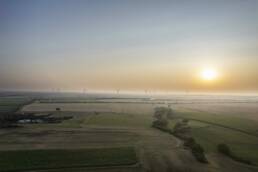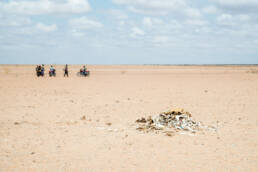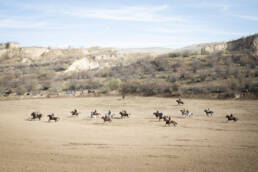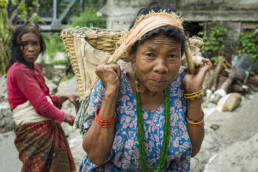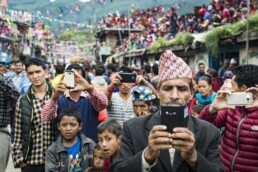How to conciliate respect of the environment and multimedia production?
Respect for the environment is one of the major challenges of this century. Each month, new studies highlight the fragility of our planet, and the impact of the overproduction of resources on our ecosystems.
All sectors are already reinventing themselves in order to offer alternative models, with the aim of creating while respecting the environment.
In the multimedia production sector, here is an outline of these new practices:
- Reduce travel that emits carbon energy, such as airplanes, etc. The production of multimedia content can involve a lot of travel. In order to limit your carbon footprint, it is possible to approach local service providers, so that they can carry out the shooting.
- To reduce your carbon footprint, it is also possible to specialize in a limited geographical area, close to your place of residence, in order to limit travel.
- Reducing your impact on the environment also means making wise use of your professional equipment, maintaining and preserving it well, and using it for long cycles.
- Become aware of the physical pollution of digital data. Retaining Terabytes of data comes at an environmental cost, since it requires either the acquisition of hard drives and backups, or space in the cloud.
- More practically, reducing its impact on the environment means reducing its use of single-use products, and leaving no waste, in places where recycling is not optimal. We can cite Rwanda, a pioneer in Africa in the ban on plastic bags, which has been followed by other countries, such as Kenya. The latter set an example. Although radical, this measure helped preserve the visual appearance of urban and rural areas, where plastic bags landed.
Two simple ideas to offset its impact on the environment:
- Finally, since it is impossible to have a neutral impact on the environment, it is still possible to donate part of its profits to projects that fight for the respect of the environment (independent environmental NGO)
- It is also possible to offer services at reduced prices for projects with high environmental value, in order to enhance their programs.
An example of drone video production about the impact of climate change on environement:
20 January 2023
Projects in 2023
21 October 2022
CONDITIONS GÉNÉRALES DE VENTE PRODUCTION VIDÉO
26 October 2021
Comment créer des contenus multimédias plus inclusifs ?
26 October 2021
How to create more inclusive multimedia content ?
12 October 2021
Renforcement de capacités en storytelling.
Capacity building training in storytelling.
Transborder communication proposes capacity building workshops in success-photo stories and video storytelling, either in-person or online, in French or English.
For whom?
This training is tailored for the development sector and humanitarian actors. The advanced training is shaped for field-staff and communication teams who want to enhance their storytelling skills.
During the training, they will develop a story ready to publish. Also, they will learn other important aspects of storytelling, such as how to conduct interviews with beneficiaries, edit and classify data, etc.
Methodology: Learn by doing in 3 steps.
This workshop will be using a “Learn by doing” methodology. After learning the basics of storytelling, the participants will be working on their own stories. They will be given feedback all along the creation process. In the end, the story will be ready to be published.
Step 1: Learn – introduction to storytelling.
During this workshop, the participants will be given the keys to powerful storytelling.
- The workshop will teach storytelling basics through various modules, such as “introduction to the four steps of storytelling” or the “How to choose a great protagonist”.
- The workshop will also focus on some technical aspects, such as an introduction to photo editing, filling metadata, and writing a good caption.
- During the workshop, some modules will introduce the participants to ethics concerns related to gathering stories in the field, such as the GDPR or the importance of collecting a consent form.
- The workshop will aim at creating an enabling environment for discussing and exchanging tips and feedback.
At the end of the workshop, each participant receives a trainee kit, including the presentation, the methodology, guidelines for the assignment.
Step 2: Do – photo or video assignment.
Then, each participant is asked to collect a story in the field. During the entire story collection process, participants will have the opportunity to exchange with the trainer and the rest of the team about their progress or challenges facing the field.
The task will be adapted to the organization needs in terms of communication content, such as:
- Create a photo story: 150-word stories + 10 to 15 captioned photos + consent forms.
- Create a one-minute video for social networks containing two interviews + stabilized shots + good audio + consent forms.
Step 3: Present – a review of the field assignment.
Finally, each participant will present their story to the team. It will be a perfect moment to discuss the challenges faced in the field and the lessons learned.
After each presentation, the trainer will provide feedback leading to a debate with the rest of the participants.
At the end of the workshop, the participants will have a story ready to be disseminated.
At the end of the training, the participants will improve their photo/video technical skills and can create multimedia content independently.
The trainer:
Lambert Coleman is a French multimedia producer. He has worked for NGO and United Nations organizations in more than fifteen countries across Africa and Asia. He produced photo stories and videos and documented programs for donors and broader audiences.
20 January 2023
Projects in 2023
21 October 2022
CONDITIONS GÉNÉRALES DE VENTE PRODUCTION VIDÉO
26 October 2021
Comment créer des contenus multimédias plus inclusifs ?
26 October 2021
How to create more inclusive multimedia content ?
12 October 2021
